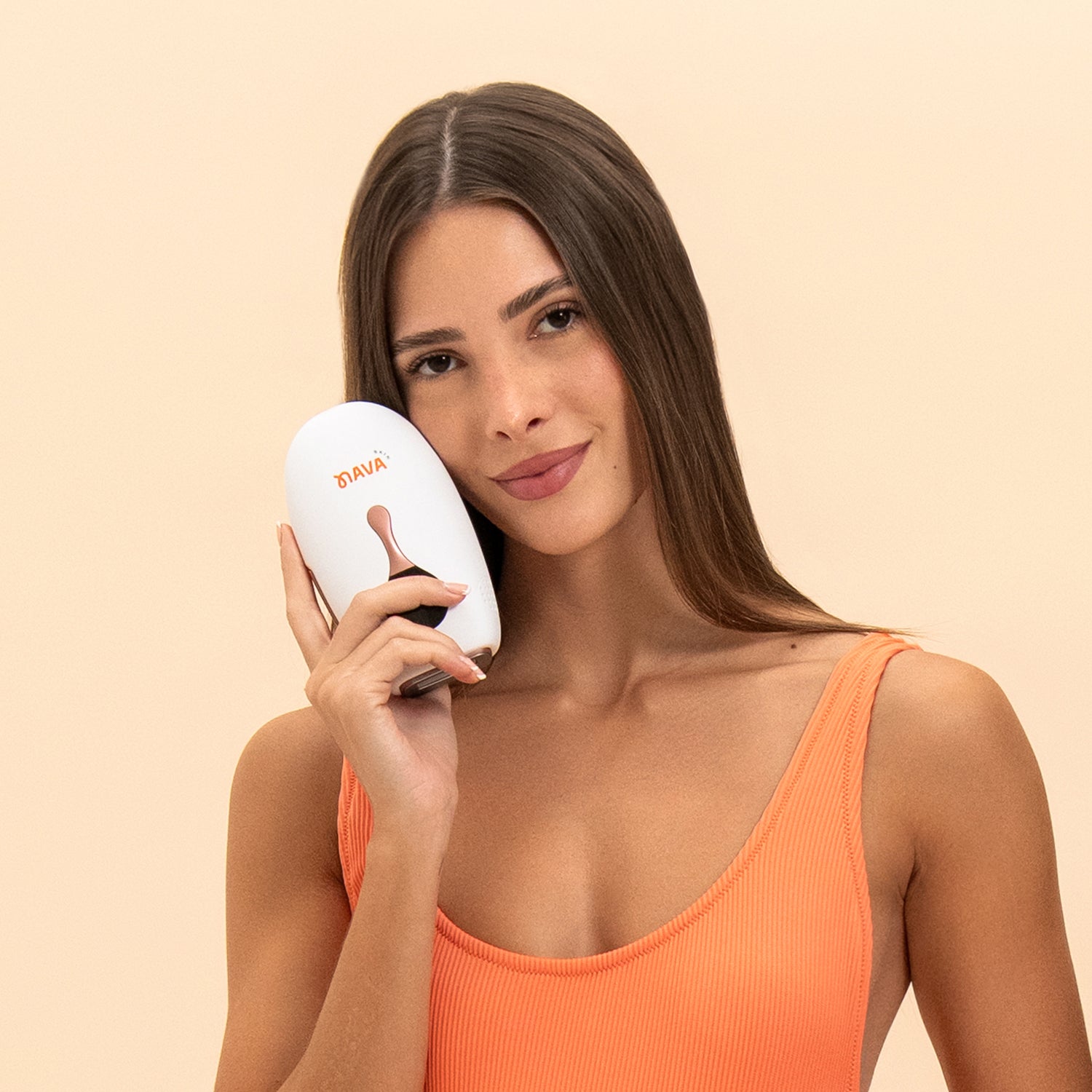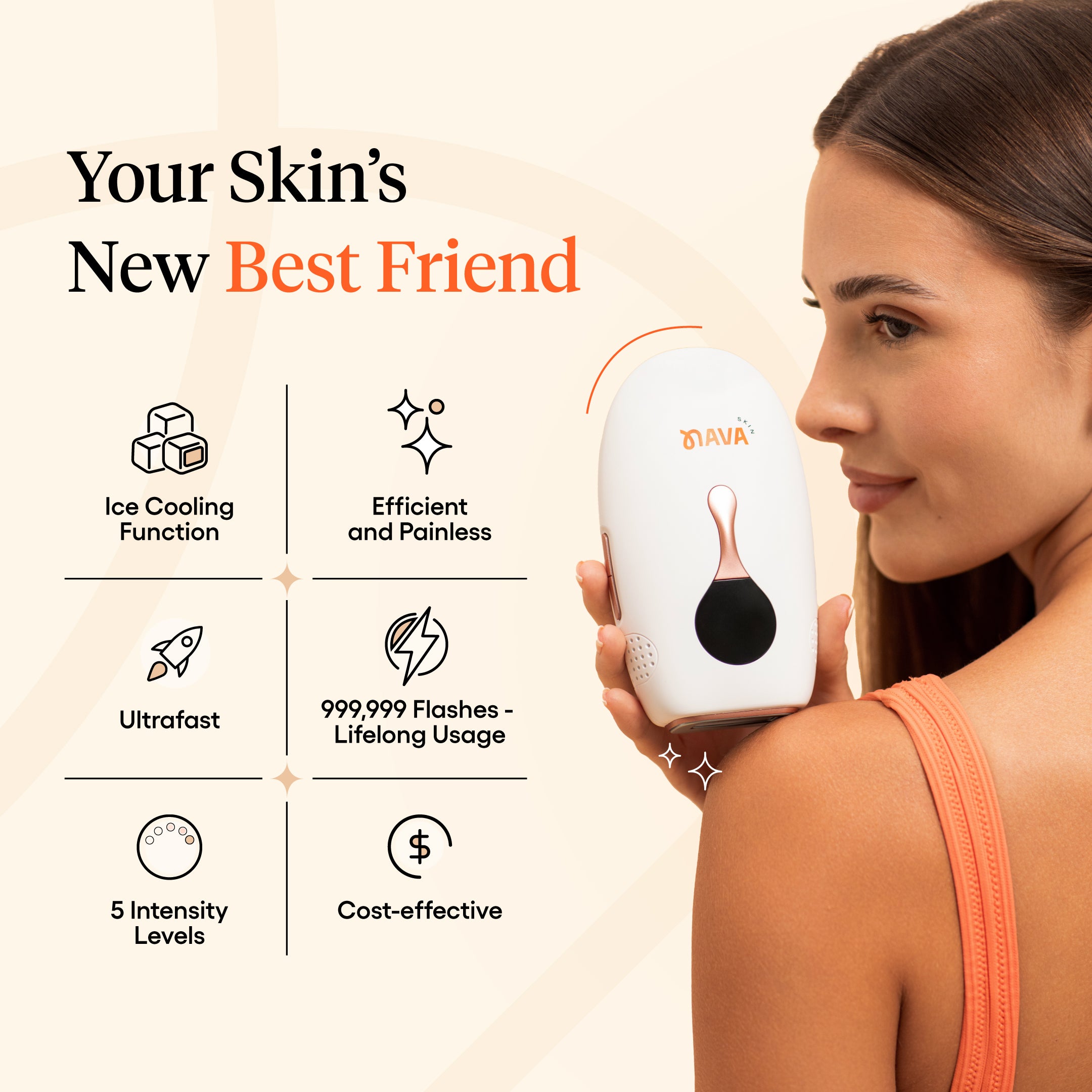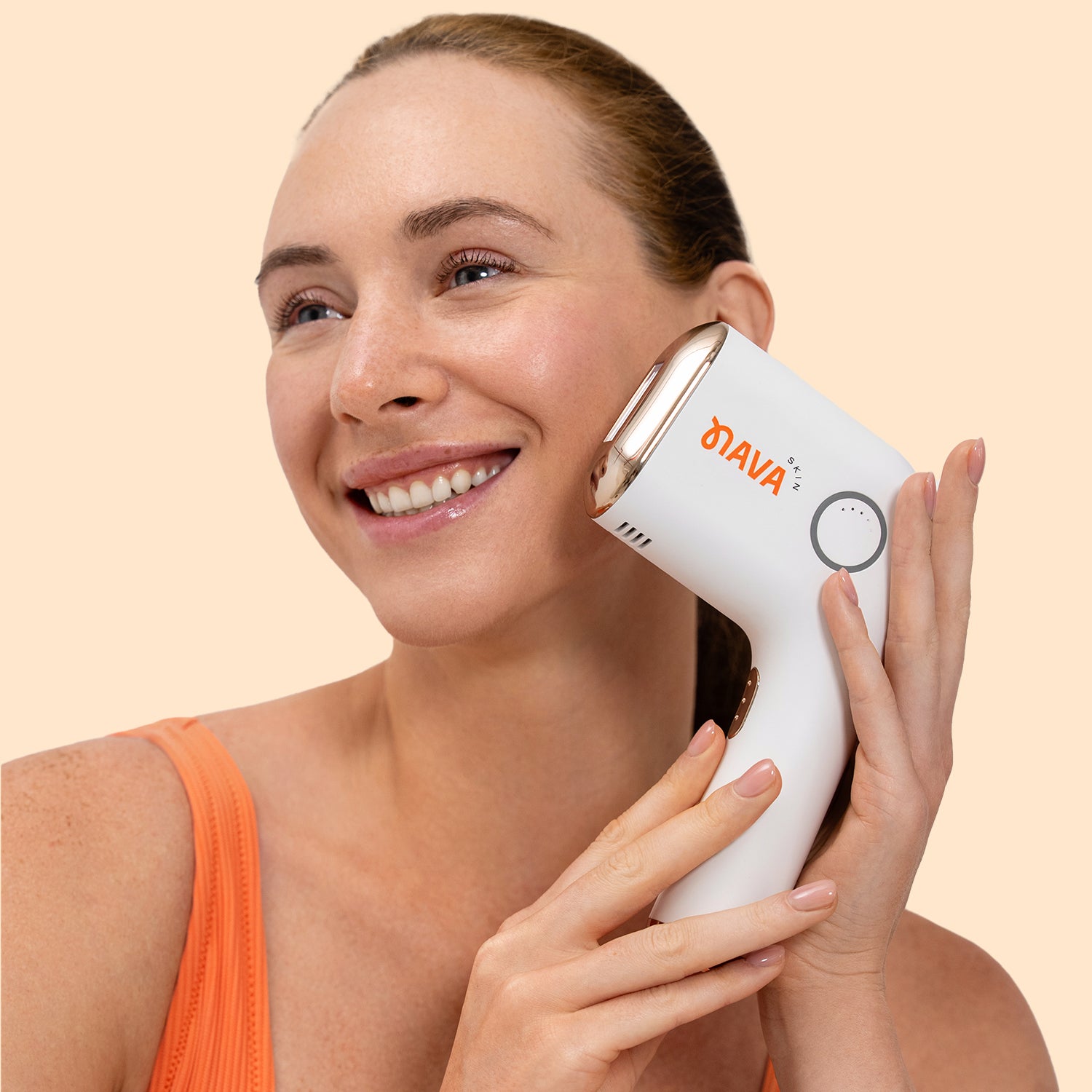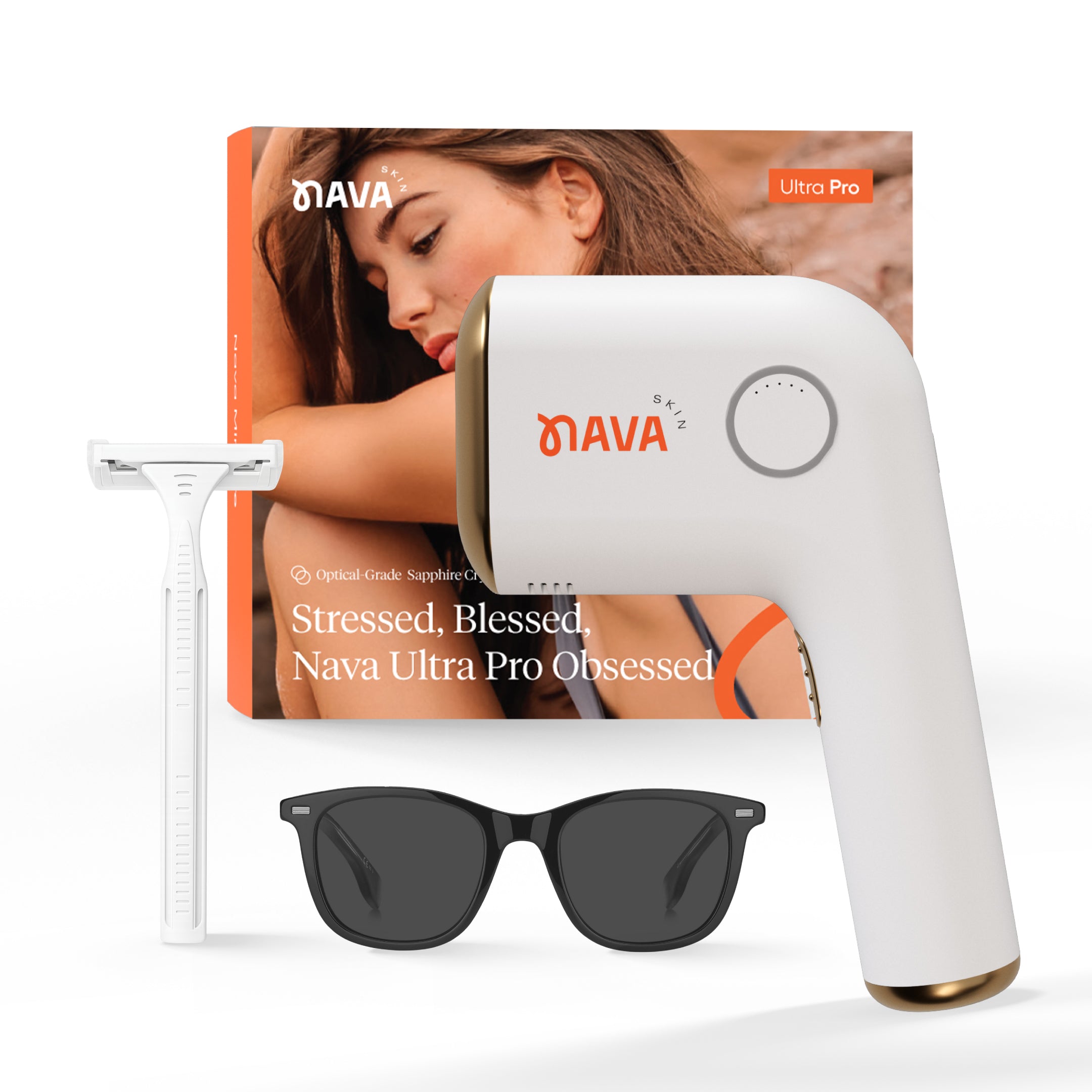Laser hair removal is known for its ability to reduce unwanted hair, but it can sometimes cause swelling and other side effects. If you’re new to laser treatments, you might wonder if swelling is normal and how long it will last. Even better — is there an option that can minimize the chances of post-treatment irritation?
In this article, we’ll dive into the causes of laser hair removal swelling, how to manage it effectively, and why IPL (Intense Pulsed Light) might be a gentler choice for those seeking a low-irritation, at-home solution.
1. Why Does Swelling Happen After Laser Hair Removal?
Swelling, also known as perifollicular edema, is a common side effect of laser hair removal. It occurs when the laser’s energy heats the hair follicle to stop hair growth, which can lead to temporary inflammation around the treated area.
- Heating of Hair Follicles: Laser hair removal works by using focused light energy to heat up and damage the hair follicle. This heat can also affect the surrounding skin, leading to mild swelling and redness.
- Skin’s Natural Response: Swelling is part of your skin’s natural healing response to heat or injury. While it may look alarming, it’s usually a sign that the treatment is working and that your skin is reacting to the laser energy.
- Duration of Swelling: For most people, swelling is temporary and subsides within a few hours to a couple of days. The severity of swelling varies based on skin type, sensitivity, and the area being treated.
- Pro Tip: Choosing a reputable clinic with experienced technicians can help reduce the risk of excessive swelling and other side effects.
2. What Does Laser Hair Removal Swelling Look Like?
Swelling after laser hair removal can vary depending on your skin’s sensitivity and the intensity of the treatment. Here’s what you might expect:
- Redness and Puffiness: The treated area may appear red and slightly puffy. This is usually mild and resembles a light sunburn.
- Small Bumps Around Hair Follicles: You might notice small, raised bumps around individual hair follicles. This is known as perifollicular edema and is a normal response to the laser’s heat.
- Warm Sensation: Some people feel warmth or tingling in the treated area due to the heat generated during the procedure. This is usually temporary and fades as the swelling subsides.
- Pro Tip: If swelling persists for more than a few days or is accompanied by intense pain or blistering, consult your dermatologist, as this may indicate a more severe reaction.
3. How to Manage Swelling After Laser Hair Removal
If you’re experiencing post-laser swelling, there are several easy ways to soothe the skin and help reduce inflammation:
- Apply a Cool Compress: Gently pressing a cool (not ice-cold) compress on the affected area can help bring down swelling and ease discomfort. Wrap an ice pack in a cloth and apply it for 10-15 minutes at a time.
- Use Aloe Vera Gel: Aloe vera has natural anti-inflammatory properties that can help soothe redness and swelling. Apply a thin layer to the treated area as needed.
- Avoid Heat and Exercise: For 24-48 hours post-treatment, avoid activities that generate heat or sweat, such as hot showers, saunas, or intense workouts, as these can exacerbate swelling.
- Apply Hydrocortisone Cream: If the swelling is particularly bothersome, a mild over-the-counter hydrocortisone cream can help calm inflammation. Consult with your dermatologist before use, especially on sensitive areas.
- Pro Tip: Keep the treated area clean and avoid applying makeup or scented products immediately after treatment, as these can further irritate the skin.
4. Why IPL May Reduce the Risk of Swelling Compared to Laser
For those concerned about post-treatment swelling, IPL might be a gentler alternative. While laser hair removal uses a concentrated beam of light, IPL uses a broad spectrum of light that is generally less intense, making it ideal for at-home use.
- Broad-Spectrum Light: IPL disperses light energy over a wider area, reducing the concentration of heat directed at each hair follicle. This can make IPL gentler on the surrounding skin, leading to a lower likelihood of swelling and redness.
- Adjustable Intensity Levels: With at-home IPL devices like the Nava Mini Pro and Nava Ultra Pro, you can adjust the intensity based on your comfort level and skin sensitivity. Starting with a lower intensity helps minimize irritation, especially for sensitive areas.
- Cooling Technology: The Nava Ultra Pro is designed with ice-cooling technology to keep the skin cool during treatment, further reducing the chances of swelling or discomfort.
- Pro Tip: If you’re looking for an effective but gentle alternative to laser, IPL offers long-term hair reduction with fewer side effects, allowing you to achieve smoother skin at your own pace.
5. Comparing Laser, IPL, and Other Hair Removal Methods
When it comes to hair removal, it’s worth comparing various methods to see which is best for your skin and lifestyle. Here’s a quick breakdown:
- Laser Hair Removal: Effective but can cause temporary swelling, redness, and discomfort. Ideal for long-term results but requires clinic visits and multiple sessions, which can be costly.
- At-Home IPL: Offers similar long-term results to laser but with more flexibility, less intensity, and fewer side effects. At-home devices like the Nava Mini Pro and Nava Ultra Pro are budget-friendly, giving you smoother skin without the risk of clinic-induced irritation.
- Shaving and Waxing: Quick, but results are short-lived, and these methods often lead to ingrown hairs, razor burns, or even more irritation on sensitive skin.
- Depilatory Creams: Dissolve hair at the skin's surface but can be harsh and irritating for some skin types. They don’t offer long-term results and can cause allergic reactions or redness.
- Pro Tip: If you’re seeking a long-term solution with less irritation, IPL is a more affordable, gentle option than laser treatments, offering similar results with greater convenience.
6. Long-Term Care for Swelling and Skin Health
Whether you choose laser, IPL, or another hair removal method, keeping your skin healthy is essential for maintaining results and reducing side effects like swelling.
- Use Sunscreen Regularly: Sun exposure can worsen post-treatment redness and increase the risk of hyperpigmentation. Always use a broad-spectrum sunscreen with SPF 30 or higher on treated areas.
- Stay Hydrated: Well-hydrated skin heals faster and is less prone to irritation. Drink plenty of water daily to keep your skin resilient and supple.
- Moisturize Daily: Keeping your skin moisturized can reduce dryness and irritation, especially in the days following laser or IPL treatments.
- Pro Tip: Integrate a gentle skincare routine with soothing ingredients like aloe vera, hyaluronic acid, or chamomile to support healing and minimize irritation.
Is At-Home IPL Right for You?
If you’re considering laser hair removal but are concerned about swelling and other side effects, at-home IPL might be the perfect fit. With devices like the Nava Mini Pro and Nava Ultra Pro, you can enjoy long-term hair reduction from home with less risk of swelling, irritation, or other post-treatment issues.
Both devices are designed to be user-friendly, allowing you to adjust intensity based on your comfort level. Plus, the Nava Ultra Pro’s ice-cooling technology adds an extra layer of protection, making it ideal for sensitive areas or those prone to swelling.
Final Thoughts: Choosing the Right Hair Removal Solution
While laser hair removal can lead to effective, long-lasting results, it often comes with temporary side effects like swelling and redness. If you’re looking for a gentler alternative with fewer side effects, at-home IPL devices offer a convenient, affordable solution that’s easy on your skin.
Explore our Nava Mini Pro and Nava Ultra Pro to find the perfect IPL device for your needs, or visit our FAQs to learn more about IPL and its benefits for sensitive skin.
Sources:
- Nava Mini Pro Product Page
- Nava Ultra Pro Product Page
- American Academy of Dermatology: Laser Hair Removal - Benefits, Risks, and Side Effects
- Mayo Clinic: Laser Hair Removal - What to Expect
- Healthline: How to Treat Laser Hair Removal Side Effects, Including Swelling
- Journal of Clinical and Aesthetic Dermatology: Complications from Laser Treatment and Their Management
- Verywell Health: Laser Hair Removal Safety Tips and Side Effects






Leave a comment
This site is protected by hCaptcha and the hCaptcha Privacy Policy and Terms of Service apply.